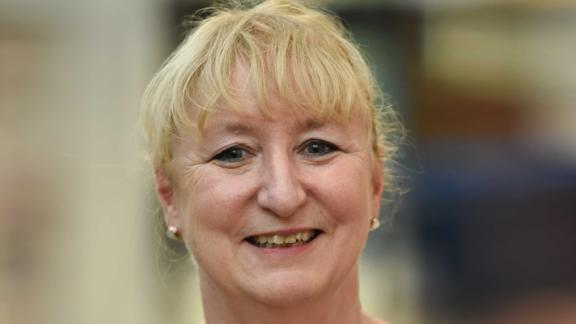NHS Reset: Gazing into the future

In this blog, part of a series of comment pieces from NHS Confederation leaders, members and partners, Niall Dickson considers the future and how a different approach to health and care could be delivered.
As we stare into the crystal ball, two futures are played out in front of us – neither is attractive. First, the new test and trace service struggles operationally, confidence in government guidance dissipates and the young especially become exasperated with messaging that is seen as too restrictive and too complicated. Soon the R number starts to rise with unexplained outbreaks that cannot be snuffed out quickly enough. NHS and care services, already having to cope with exhausted frontline staff, must brace themselves for another surge or surges.
It is possible we will avoid this, but it will depend on public compliance and the new contact tracing regime.
There is an alternative that could still be grim. At the risk of articulating what is already well known to our members, resuming services that have been reduced or stopped by the virus is already proving to be a significant challenge. The virus has not gone, the risks are highest in medical facilities, and business as usual cannot be business as usual with heightened infection control procedures including widespread use of PPE. This is nothing like turning on a switch.
And, the demand side of the equation is daunting to say the least.
A reality check
The combination of months of enforced inactivity among frontline services and the physical and mental toll of the lockdown is not easy to quantify at this stage. But we all know the dials are all moving in the wrong direction. Domestic abuse incidents are up 9 per cent on the same period last year, almost certainly an underestimate; 200,000 people a week have not been screened for bowel, breast and cervical cancer across the UK, with perhaps 2,000 missed cancers every week; abused children now more invisible than ever – referrals to councils have fallen by more than half in some areas. ONS figures show 18 per cent more deaths which are not linked to COVID-19 compared to the same period last year; more than 2 million operations have been cancelled. The cost to our collective mental health is hard to gauge but estimates suggest perhaps half the population are feeling more anxious or depressed than normal, many are sleeping less well and nearly one in five drinking more alcohol.
In short, we have a damaged set of services that need to cope with a damaged population.
Again, as we know only too well, these health and care services were struggling to cope before the crisis began. Waiting time targets for operations and for treatment in EDs were being missed across the UK and headline targets for GP referral to treatment times were deteriorating. Demand everywhere, following a pattern across the developed world, was rising at such a rate that current models of care were without question unsustainable. The summer beckons but winter is already a concern throughout the service.
To all this must be added the social and economic impact, with broken businesses, large-scale unemployment and all the predictable results of a likely national and probable worldwide recession. Here, the recent and uncharacteristic largesse of the Treasury is bound to disappear, and the blame game could again become our national pastime.
So what do we do now?
We can begin by seizing the opportunities. The health service, and thankfully now the care sector as well, has never experienced this level of public support and goodwill. We need to capitalise on this.
We are moving towards a tentative but shared vision of how a different approach to health and care could be delivered. There is widespread acceptance by staff that there are new and exciting ways of providing care and new clinical leaders are emerging to drive through reform at all levels. The innovation in the way services and pathways are provided and the countless innovations, alongside a step change towards a digitally based service, can bring transformation everywhere at speed and scale.
To achieve any of this though, we will need a clear set of demands and a focused engagement with politicians and the public.
We need the political establishment to recognise and accept the extent of the challenge we face. We need realistic expectations of what can be achieved by when. The pandemic has once again highlighted the fact that politicians find it irresistible to over promise – just the latest example being the test and trace scheme, which in spite of all sorts of caveats and concerns from those who were designing it, was announced as being world beating before it had even got off the ground. And to be fair to those in charge, none of this is helped by the doom-monger tendency of politicians in opposition, nor the massive challenge for anyone in any kind of authority trying to communicate through the cacophony of social media noise, much of it confusing, polarised and inaccurate.
Yet the service and the sector is not powerless, even if we are sometimes weakened by vested interest and internal strife. Over the next few months, it will be important first to win the battle of expectations. We must seek to reach an understanding with the centre, with government and with the wider public about what can and cannot be achieved. Unrealistic promises and targets will achieve nothing and will sap morale.
Second, we do need a debate about a new structure for the health service in England (backed if necessary, by legislative change). Similar questions arise in Wales. There are two critical fault lines to be addressed – on the one hand the relationship and accountabilities between national oversight and local operations and on the other between health and social care and de facto between the NHS and local government.
Third, and tied to those realistic expectations, we need a new funding settlement for health and care ahead of the comprehensive spending review in the autumn. This is about more than a securing headline figure. Will the social care question finally be answered? Are we still committed to investing more in primary and community care compared to the historical approach to the acute sector? Can we create a new finance and incentives framework that tackles perverse incentives and supports services focused on integration and improving population health? Can we convert the mantra of system by default into the guiding force in every part of the country? Can capital investment in all NHS settings help us provide better facilities and technology as well as help ailing local economies?
Fourth – again linked to the expectation issue - we need local plans to complement national efforts to manage staffing constraints. Before COVID-19, we had 90,000 FTE vacancies in hospital and community services in England as well as serious shortages in primary care. The economic downturn may favour our sector’s need to recruit but we know there is already much that can be done on regional and local footprints.
And last it will be the capacity and willingness of the sector to embrace innovation that ultimately will determine whether the NHS and social care meet the challenge.
Through NHS Reset, our project to help the service explore all of this, we hope to support leaders to deliver something different and something better. We will also want to submit views to the centre to influence funding, structure, and expectations over this coming period. The next few months will be critical if we are to influence national and shape local policy.
The new Observatory
NHS England and NHS Improvement recently announced that the NHS Confederation will host an Observatory on race and health. This is an exciting opportunity, and the centre deserves credit for accepting that we need an operation that is independent to identify the nature and extent of race inequality in health, both in term of the services that are provided and the experience of employees from ethnic backgrounds. Its role will challenge the status quo and recommend action where it is needed.
This matters because it is an issue of social justice, but it matters too because if we are to address the wider challenges described above, we will have to mobilise and maximise the contribution of all staff in health and care. The question for all of us is: are we doing enough and, if not, what more can we do or what can we do differently?
The Observatory will shine a light and provide evidence that should help shape services, not by fluffy gestures, but through hard-nosed clinical and proven interventions based on a better understanding of how different communities work.
At the Confederation, we are stepping up our activity in diversity and inclusion. We have set up a task force to look at recruitment to boards and have established a BME leaders group committed to supporting current and aspiring leadership talent from across the NHS. Under our NHS Employers brand, we are working with every NHS organisation in England on how we can better support our BME staff and women leaders through our Health and Care Women Leaders Network. We have published guidance on how to enhance risk assessments for at-risk staff groups, noting that systemic issues and experiences of discrimination make it more difficult for BME and disabled staff to raise concerns.
Please do encourage your teams to engage with this work and let us know if there are other ways we can support you, and improve performance in this critical area.
Niall Dickson is chief executive of the NHS Confederation. Follow them on Twitter @NHSC_Niall and @NHSConfed



